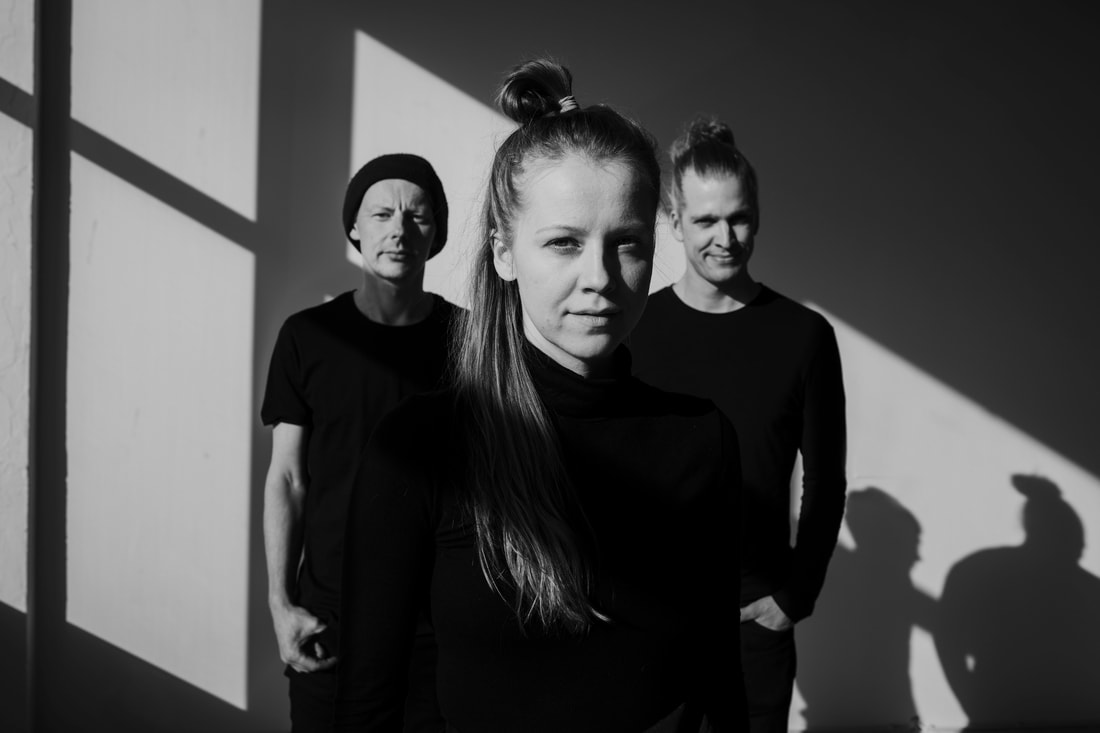|
Hi again! We're into the third week of Global Music Match and this week we've been getting to know the wonderful OOPUS from Estonia. OOPUS, an Estonian nod to the Latin opus (work of art), are an audio-visual band who combine light installations and visuals from Aleksander Sprohgis and modern electronic sounds and rhythms from Johannes Ahun, with Estonian traditional instruments from Mari Meentalo (Estonian bagpipes, flute, whistles, jaw harp and vocals). In a nutshell, 'folk on acid'. At first glance, folk and electronica perhaps make for an unusual fusion. But both have dance at their core and, as Mari tells us, combining electronic dance music with traditional dance tunes ‘seemed logical’ The lineage of folk music in Estonia, like many of its neighbours, was interrupted by the country’s occupation by the Soviet Union in 1940. Although traditional music was an important part of Soviet life, OOPUS tell us how the meaning and identity of the music had to be adapted to fit with Soviet values, swallowing Estonian heritage with it. In 1947 Gustav Ernesaks set the old Estonian poem Mu Isamaa On Minu Arm (My Country is My Love) to music and defiantly performed it at a festival, where it became an unofficial national anthem. In the late 1980s, music became the mechanism under which Estonia split from the Soviet Union. Large groups began to gather to organise independence, under the guise of gathering to sing. It became known as the ‘Singing Revolution’. Activist Heinz Valk wrote that ‘a nation who makes its revolution by singing and smiling should be a sublime example to all.’ In 1988, 100,000 Estonians gathered for five nights to sing protest songs until dawn. The movement culminated in the country’s non-violent independence in 1991. The country’s independence sparked a revival in the Estonian folk scene. The Estonian National Literature archives are a well-preserved collection of traditional songs, archived by folklorists in the 19th and 20th centuries. The nation yearned to refamiliarise itself with its traditions and heritage. And with over 1.5 million songs in the collection, there’s well over one song for every Estonian. Viljandi Culture Academy started to teach traditional music in the ‘90s, where Mari and Johannes met and subsequently formed OOPUS. They describe the movement as a ‘second wave of traditional music in Estonia’. At the forefront of this revival, OOPUS are rekindling traditional dance tunes for the next generation. But storytelling is also important for the band. Traditional songs tend to focus on myths and folklore. Their song Hingesandid (Soul Mummers) celebrates an Estonian tradition that begins in November at the start of ‘the dark months’. Similar to Halloween, children dress up as their ancestral spirits and sing songs in exchange for sweets. Consequently, there are many traditional songs associated with this time of year. Hingesandid is a song for the souls ‘from behind the stars and over the clouds’. Another storytelling element, albeit conversely futuristic, is the immersive element of their live show. At the beginning of the concert, they invite the audience to climb on board their spaceship and navigate the galaxy with them through their set.
OOPUS perform from the centre of the audience, just as traditional musicians would have done back in the day *insert time-period of your choosing* when there was no division between stage and dancefloor. A seemingly ultra-futuristic staging choice is actually a nod to the archaic. And combining the old with the new is at the core of the band’s message: to remember an almost-lost heritage, rewritten for today. Next week we'll be introducing Arcadian band Vishten from Prince Edward Island. Until then, The Magpies x
2 Comments
Leave a Reply. |
|

